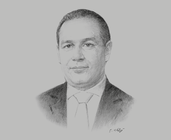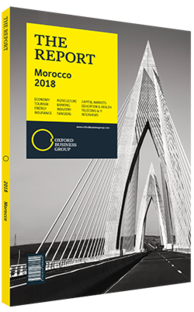Tarafa Marouane, Chairman, SOMED Group: Interview

Interview: Tarafa Marouane
Which infrastructure projects are set to support growth in the Moroccan economy in 2018?
TARAFA MAROUANE: The port of Nador will provide an opportunity for economic growth in Morocco’s Northern region, particularly in the Rif area. What could really boost the economy is highway infrastructure for the central region. The kingdom’s highway infrastructure primarily connects major urban centres near the Atlantic coast and in the central region such as Tangiers, Agadir, Marrakech and Fez. If this infrastructure were to be extended to Morocco’s hinterland, then those regions could easily be developed.
Regionalisation is key here: it is pivotal that they develop their own infrastructure to boost and add value to the local economy or, at least, to become more connected to Morocco’s major cities. A prime example of such a project is the tunnel between Marrakech and Ouarzazate. Unfortunately, in a number of regions, numerous projects lag behind, particularly those concerning roads, hospitals, schools and airports.
In Morocco, and even in other countries, public-private partnerships constitute an interesting model for small public works projects but not for large-scale projects. This is because the private sector constantly has a mid-term outlook, whereas infrastructure is always a long-term ambition. The private sector could act as suppliers or subcontractors, but they won’t really invest in infrastructure, as these are long-term projects.
Additionally, there has been a delay in the formation of a government coalition, as well as in the enactment of the Finance Law of 2017. However, it is likely that 2018 will offer more promising perspectives.
What role do foreign investors play in boosting growth in the construction sector?
MAROUANE: Foreign investors have an immense impact on the Moroccan economy. The future relationship with the Economic Community of West African States (ECOWAS) is also set to present Morocco with great opportunities and establish it as a regional hub. This will have a crucial impact on the country’s infrastructure, connecting Morocco to Mauritania, and to many other countries. It requires massive port investment, and to develop the relationship with ECOWAS, the country will have to develop freights.
I believe that real estate will recover from three years of stagnant growth. We are stable, but if the state starts to invest, 2018 will be characterised by more liquidity in the market, making it a year of recovery. Casablanca and Rabat have been the main players in real estate, and development projects in cities such as Tangiers, Nador and Kenitra will further propel demand in the sector. We have a lot of suppliers within the automotive industry, namely Peugeot and Renault, that are choosing Tangiers or Kenitra.
However, if the Ministry of Economy and Finance is able to reduce the internal debt to pay the value-added tax (VAT) and its suppliers, there will be less pressure for companies and more liquidity in the market. Upon receipt of VAT, companies are then incentivised to invest more in real estate development.
How would you describe economic relations between Morocco and the UAE?
MAROUANE: This relationship has been collaborative and mutually beneficial for a long time. The UAE has always been one of the main investors in Morocco; it is the third-biggest foreign financier in the kingdom. A bilateral free trade agreement that came into effect in 2001 has facilitated the influx of investment.
Today, UAE companies are investing in different sectors, mostly real estate and hospitality, and numerous tourism and real estate projects have been kept profitable through financing and investment from the Gulf. In addition to increasing investment in the health and education sectors, the UAE has become the largest investor in the Casablanca Stock Exchange through the acquisition of a minority stake in Maroc Telecom.
You have reached the limit of premium articles you can view for free.
Choose from the options below to purchase print or digital editions of our Reports. You can also purchase a website subscription giving you unlimited access to all of our Reports online for 12 months.
If you have already purchased this Report or have a website subscription, please login to continue.

